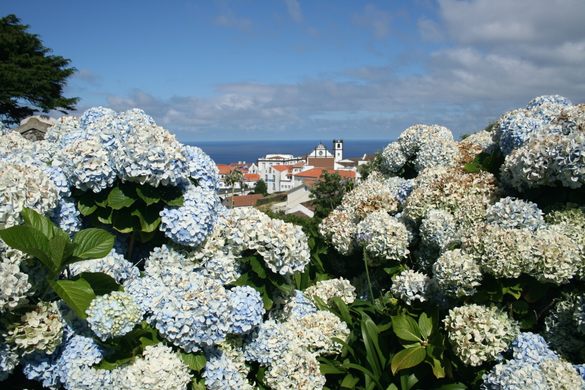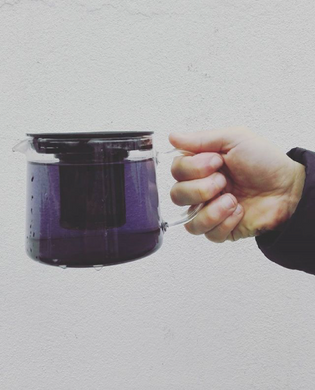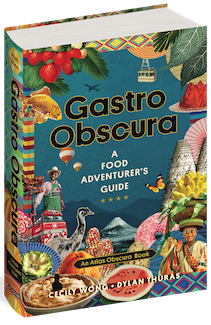AO Edited
Gastro Obscura
Violet Volcanic Tea
When Azorean green tea meets volcanic hot springs water, a luminous brew is born.
The island of São Miguel in the Portuguese Azores boasts lush, rolling tea plantations in orderly emerald lines, with pink camellias yawning beside rock walls and blush-purple hydrangeas blooming along craggy volcanic pools. In the small town of Furnas on the eastern side of the island, simmering springs thicken the air with steam. When this spring water combines with one of the island’s signature teas, the brew—originally golden-green—turns an inky indigo.
The Azores are an autonomous chain of Portuguese islands located in the mid-Atlantic between the Portuguese mainland and Morocco. As such, São Miguel’s subtropical climate makes it home to some of Europe’s only tea plantations, Chá Gorreana and Tea Porto Formoso. While green and black teas are plentiful across the island, São Miguel also offers its own unique variety: purple volcanic tea.
At Chalet de tia Mercês, a tea shop in Furnas, brewers use tapped volcanic spring water to brew this singular violet tea. Its color is the product of a chemical reaction between the antioxidants in the tea and unoxidized iron in the spring water. The flavor of the luminous purple brew is earthy, with clay-like notes.
The volcanos are employed in making more than just tea, as well. Visitors to Furnas can also taste cozido das Furnas, a Portuguese chicken, pork, and vegetable stew cooked in the natural volcanic heat. After enjoying their tea and stew, visitors can themselves steep in one of the island’s many swimmable springs.
Know Before You Go
The Azores’ unique tea plantations reveal part of the history of Europe’s love for the beverage. While the drink was already popular in Europe, Azoreans first imported tea for cultivation from India and Japan in the 1860s, following a blight that wiped out São Miguel’s orange crop. Unsure how to grow tea, Azorean farmers enlisted the help of Lau-a-Teng, a Chinese tea expert, and a number of other Chinese tea farmers, to help develop the industry. The Portuguese word for tea, chá, itself contains hints of this complex history: The Portuguese initially traded for tea via Macau, where locals used the Chinese word cha (茶) to describe the precious brew.
Community Contributors
Added by
Edited by
Plan Your Trip
The Atlas Obscura Podcast is Back!






















Follow us on Twitter to get the latest on the world's hidden wonders.
Like us on Facebook to get the latest on the world's hidden wonders.
Follow us on Twitter Like us on Facebook